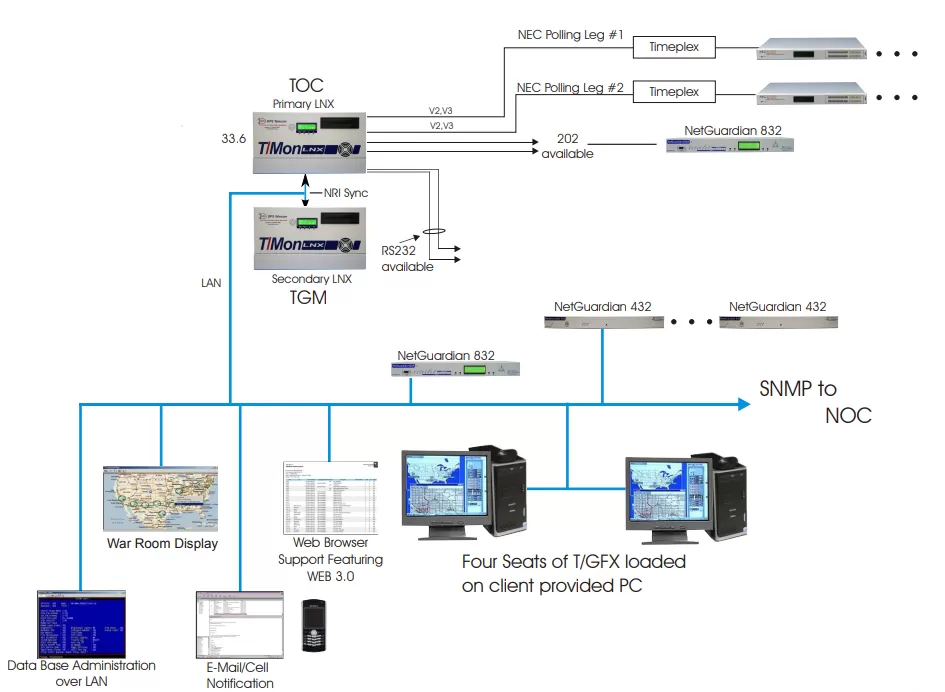Check out our White Paper Series!
A complete library of helpful advice and survival guides for every aspect of system monitoring and control.
1-800-693-0351
Have a specific question? Ask our team of expert engineers and get a specific answer!
Sign up for the next DPS Factory Training!

Whether you're new to our equipment or you've used it for years, DPS factory training is the best way to get more from your monitoring.
Reserve Your Seat TodayWhen remote sites are powered by generators, it's essential to keep track of generator run time. Not only is this important for ensuring generator maintenance, but it's also mandated by the EPA. The Environmental Protection Agency requires certain industries, such as telecommunications, public utilities, and government agencies, to track generator usage to comply with environmental regulations.
Businesses relying on backup generators need to ensure they adhere to EPA guidelines, and efficiently track their generator run time for compliance reporting.
In this blog, we'll delve into the importance of monitoring and reporting generator run time for EPA compliance and recommend some tried-and-true generator monitoring solutions.
The EPA requires sites powered by generators to track run time to ensure the generators are not causing excessive emissions that may contribute to air pollution. The regulation requires the generator to run no more than 100 hours per year. If the generator is used more than this, the site owner must report this usage to the EPA. Failure to comply with this regulation can result in fines or legal action.
According to the U.S. Environmental Protection Agency, Section 60.4219(a) of the National Emission Standards for Hazardous Air Pollutants (NESHAP) requires owners or operators of emergency engines to maintain records of operation for each engine for at least three years. This includes the hours of operation, reasons for operation, and maintenance activities performed.
Meeting these EPA generator requirements demands a meticulous approach to tracking generator run time, differentiating between routine exercises and actual power outages.
Monitoring generator run time can be challenging, especially in remote sites where the generator may be unmanned. It can also be difficult for operators to accurately keep track of generator time when dealing with a large number of remote sites.
A key aspect of tracking generator usage is distinguishing between "exercise" and "outage" runs. Exercise runs are routine tests of the generator to ensure it is functioning correctly, while outage runs occur when the power fails and the generator is needed for backup power. It's important to track these two types of runs separately because only outage runs count towards the EPA's 100-hour limit.
Manual tracking methods are prone to errors and can lead to non-compliance issues. Additionally, the lack of real-time data can hinder quick responses during power failures, impacting business operations.
Companies need to be aware of the EPA's regulations for generator run time, especially those operating in the telecommunications, public utilities, and government agencies, which have remote sites. With the right monitoring setup, you can easily monitor and generate reports that satisfy the EPA's requirements on generator run time.
You need a monitoring solution that will automatically track routine generator tests, report failures and outages, and help you easily report accumulated run time for EPA compliance. By taking advantage of effective and comprehensive remote monitoring solutions, you can avoid costly non-compliance issues and continue to provide uninterrupted services to your customers.
Beyond ensuring compliance with EPA regulations, a robust generator monitoring system provides a host of additional benefits that contribute to seamless operations and cost savings. According to our blog on Generator Monitoring System Best Practices, these benefits include predictive maintenance, asset protection, and improved efficiency.
Predictive maintenance involves identifying problems at the earliest stages, allowing you to address issues before they escalate into major faults. For instance, monitoring parameters such as fuel levels, load levels, and battery voltage helps you detect anomalies early, thus preventing costly downtime.
Asset protection is another significant benefit. A quality generator monitoring system can send notifications about potential theft or tampering, offering an extra layer of security for your assets.
Additionally, data analysis informs you so you can make improvements leading to increased efficiency. By studying trends in generator usage, you can make informed decisions about load management and resource allocation, promoting efficiency and cost-effectiveness.
A robust generator monitoring system is not only an EPA compliance tool, but also a strategic asset that enables predictive maintenance, protects your equipment, and improves operational efficiency. Read more about generator monitoring best practices.
DPS Telecom offers products that can help clients track generator run time accurately. The T/Mon master station can collect information from multiple NetGuardian RTUs, which are installed at remote sites. The NetGuardians can track generator run time and distinguish between exercise and outage runs. The T/Mon then compiles this information into a report that can easily be sent to the EPA for compliance purposes.
The T/Mon and NetGuardian RTUs also offer other benefits besides EPA compliance. They allow remote sites to track generator maintenance needs accurately. They can monitor fuel levels, oil pressure, engine temperature, and other metrics that are essential for keeping the generator running smoothly. This information can be used to schedule necessary maintenance activities, like oil changes or filter replacements.
In addition to monitoring generator run time, the T/Mon can also track other critical metrics for remote sites, such as temperature, humidity, and power usage. This information can help clients identify potential issues before they cause outages, saving time and money. The T/Mon can even send alerts to maintenance teams or field personnel when issues arise, enabling rapid response times.
One of our clients, a large energy delivery company serving almost 100 counties in Texas, reached out looking for a solution to help satisfy EPA generator monitoring requirements. Ron, one of our Sales Engineers, and Colin from the DPS engineering team collaborated with their technicians to build a solution that works well for their infrastructure.
This power company now has around 150 NetGuardian 432s deployed at their remote sites, which are polled by a T/Mon LNX. They have an alarm point set when a generator is running, and have configured their monitoring system to report accumulated "exercise" run time from the beginning of the year to the present.

This solution was a perfect-fit addition to this client's existing DPS remote monitoring system. They also have DPS equipment set up to help them monitor environmentals, voltage, and beacon lights, LPG tank fuel level, and ping reports for hundreds of remote sites.
Monitoring generator run time is not only essential for EPA compliance, but it's also necessary for ensuring the continued operation of remote sites. Using the T/Mon LNX and NetGuardian RTUs allows clients to accurately track generator usage and other critical metrics, allowing for proactive maintenance and reducing the likelihood of outages. With DPS Telecom products, you can rest assured that they are meeting EPA regulations and keeping your sites running smoothly.
Ensure your business is not just compliant but optimized. Contact us at DPS today and let us know what monitoring goals and needs your organization has. We will collaborate with you to create a solution that will transform the way you manage your generator run time and other conditions at your remote sites, safeguarding both the environment and your bottom line.

Haley Zeigler
Haley is a Technical Marketing Writer at DPS Telecom. She works closely alongside the Sales and Marketing teams, as well as DPS engineers, resulting in a broad understanding of DPS products, clients, and the network monitoring industry.